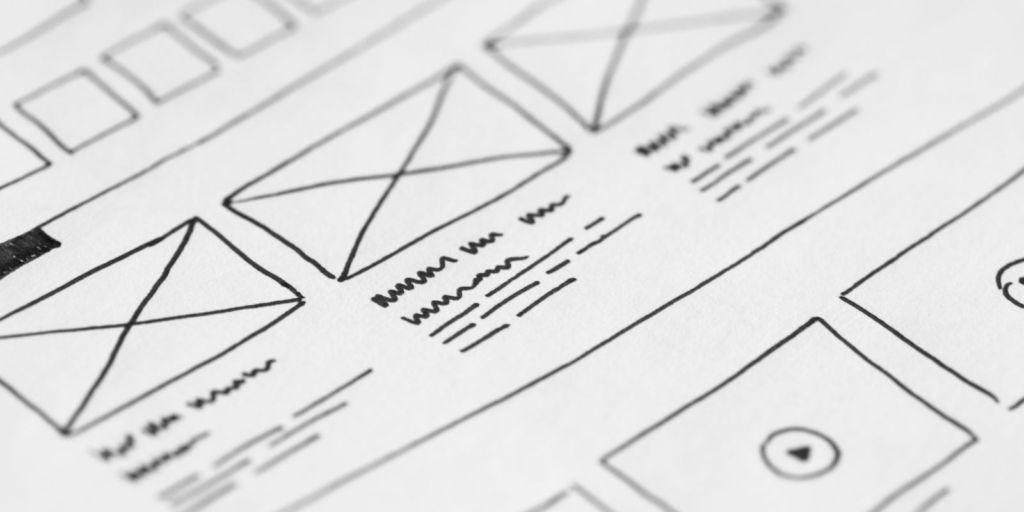GoTripod News / Software
Transformation from every angle
The importance of the project discovery phase in custom software development
Kicking off a custom software development project is an exciting, yet often formidable, prospect. While it presents your business with the opportunity to innovate, introduce workflow efficiencies and improve user and customer experience ratings, it needs to be done utilising proven frameworks and processes in order to maximise its probability of succeeding. However, one crucial early step that often gets overlooked or underestimated is the project discovery phase.

It’s a fundamental phase which lays the groundwork for the project’s overall success, minimising risks and setting the stage for the launch of an impactful, cost-effective digital product.
And, here at Go Tripod, it’s a phase we take extremely seriously, both from a technical perspective and a customer relationship point of view. It’s a mutually beneficial step which sets the scene and enables us to get to know your team as we outline what exactly your software solutions will look like, even before a single piece of code has been written.
So, what is the Discovery Phase?
The discovery phase is the initial step in the software development process, where developers, stakeholders and users collaborate to thoroughly understand the project’s objectives, scope, and potential challenges. It involves gathering information, defining requirements and creating a strategic plan that aligns with both business goals, budget and technical constraints.
Why is the Discovery Phase important?
- It clarifies the project vision and objectives
The discovery phase helps everyone involved clearly define the project’s purpose and desired outcomes. Through project discovery workshops, interviews and good old-fashioned brainstorming sessions, stakeholders can articulate their expectations and align on a shared vision. This clarity prevents misinterpretations and misaligned objectives that could derail the project at a later stage.
- It identifies key requirements early in the process

Clear, comprehensive gathering of requirements during the discovery phase ensures that the development team understands both the functional and non-functional requirements of the project. This means detailing what the software must do (e.g.process data, integrate with existing systems) and how it must perform (e.g. speed, reliability). Identifying these requirements early on helps in shaping the development roadmap, reducing scope creep and unforeseen feature requests.
- It mitigates risks and challenges
Every project has potential hurdles which will need to be overcome. The discovery phase helps teams pre-emptively identify technical challenges, potential compliance issues and user experience (UX) pitfalls. By acknowledging these challenges early, teams can develop strategies to address them, leading to fewer disruptions during later stages of development.
- It ensures budget and timeline accuracy

One of the most common reasons projects run over budget or beyond their deadlines is a lack of thorough planning. Period.
The discovery phase provides a realistic assessment of time, resources and budget. In understanding the full scope and intricacies of the project upfront, developers can set accurate timelines and budgets that stakeholders can rely on.
- It strengthens stakeholder buy-in and communication
Engaging stakeholders during the discovery phase builds trust and ensures that all voices are heard right from the off. This collaborative approach helps mitigate future conflicts by ensuring that everyone has a comprehensive understanding of the project’s goals and constraints from the beginning. When stakeholders feel involved and informed, they are more likely to stay engaged and supportive throughout the project.
- It creates a blueprint for development
The discovery phase often results in tangible outputs like wireframes, prototypes, user journeys and technical documentation. These elements act as blueprints that guide the development team through the building process, ensuring consistency and adherence to the initial plan.
This is akin to constructing a building with detailed architectural plans versus going in blind; having a map reduces the chances of costly rework and redesign.
Six steps in the Discovery Phase
- Initial consultation and goal setting
The process begins with in-depth discussions between the software development team and stakeholders to understand the business’s goals, pain points and expected outcomes.
We love this time at Go Tripod!

It’s a time when we can really get to know your team, seek out what really makes you all tick and what you and your customers really need from the project. And we’re pretty sure, you’ll enjoy this time with us too. We might be software developers, but we’re an amiable bunch with over 15 years’ experience of business processes in all areas, as well as writing code.
- User Research
To design software that meets user needs, it’s essential to gather input from the end-users themselves. Again, this is a really insightful and enjoyable part of any project where we conduct interviews, surveys and user testing, which can reveal areas that have an impact on design choices and features.
- Technical Feasibility Analysis
Evaluating the existing technical landscape and determining how the new software will integrate with current systems ensures that there are no surprises once development begins.
Our extensive experience and appetite to continuously learn mean that we’ll be able to utilise the most current and technical platforms and tools.
- Scope Definition
Clearly defining what will be included in the project (and just as importantly, what will not) helps maintain focus and prevent scope creep.
- Prototyping and Wireframing
Visualising the software’s functionality and flow with wireframes and prototypes helps stakeholders and developers align on user experience and overall design before investing significant resources in the full development phase.

- Documentation
The output of the discovery phase is detailed documentation that serves as a roadmap for the entire project. This includes specifications, risk assessments, budget estimates and timelines.
Benefits Post-Discovery Phase
With a thorough discovery phase completed, development teams can enter the design and build stages with confidence. They have a roadmap that guides decision-making, a deep understanding of user expectations and strategies in place to tackle potential challenges. This preparation leads to fewer revisions, a more streamlined development process and ultimately, a beautiful custom-built software product that aligns closely with client needs and performs reliably.
Right back at the beginning of this article we said that the discovery phase of a custom software project is often an area which is overlooked or underestimated.
So, what are the common pitfalls of skipping the discovery phase?
Not something we would ever recommend or do at Go Tripod, but projects that bypass the discovery phase often suffer from:
- Scope Creep: Undefined requirements can lead to constantly changing project goals.
- Budget Overruns: Without an accurate budget from the start, costs can spiral out of control.
- Delayed Timelines: Development teams may encounter unexpected challenges that could have been foreseen with better planning.
- Dissatisfied Stakeholders: A lack of clear communication and engagement early on can lead to disappointment when the final product does not meet expectations.
In conclusion, the discovery phase of a custom software development project is not just a preliminary step— it’s the foundation of a successful project.
Investing time and resources in this phase saves money, reduces risk and creates a strong blueprint that guides the development process. For any business looking to develop custom software, prioritising the discovery phase is a strategic move that pays off in the long run.
By fostering better alignment, informed decision-making and comprehensive planning, the discovery phase ensures that your custom software project delivers the value your business needs, on time and on budget.

We’d love to kick off your next software development project together.
Get in touch today and let’s see how we can build some beautiful software for you that will be impactful and help your business grow…
Simply email [email protected], call us on 0845 475 2487 or complete the form below.